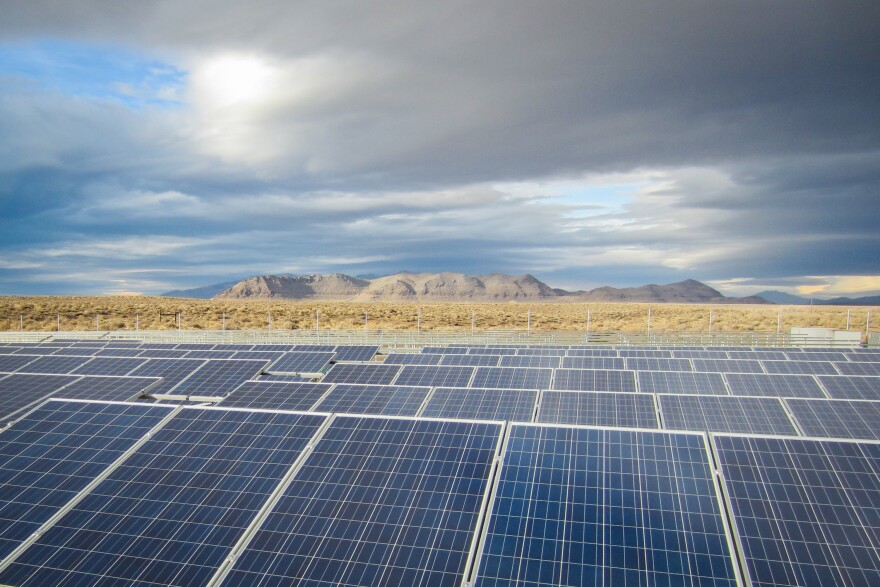Nevada’s solar industry is the largest in the country relative to the size of its economy, according to a new analysis by the data journalism hub Stacker. Utah, Arizona, Colorado and New Mexico also ranked in the top 10. Stacker compared the number of solar jobs in each state to the size of its non-farm workforce.
John Scire teaches energy policy at the University of Nevada, Reno. He says Nevada also leads the country in per capita solar energy production, even though it doesn’t have the largest total output.
Scire says that’s partially because Nevada benefits from ample sunny weather and lots of federal land, where large-scale solar plants are increasingly being developed. That gives the state a big advantage when it comes to the amount of solar capacity that could still be added.
But the massive “solar farms” on the desert landscape come with their own baggage. Environmentalists argue they have adverse impacts on threatened species like the desert tortoise, which already faces grave threats from habitat loss and climate change.
Positive incentives like federal tax rebates are also helping drive solar development. Scire says the government could help even more by adopting negative incentives.
“Number one negative incentive would be simply to put a carbon tax on emissions,” he said.
Nevada may need such incentives if it’s going to reach its ambitious emissions targets.
The Nevada Division of Environmental Protection recently found the state would likely miss its goal of reducing greenhouse gas emissions by 45% below 2005 levels over the next decade. At the current pace, emissions are predicted to be just 24% lower than what the state produced in 2005.
Transportation emits the largest share of greenhouse gasses in the state. The state report projects that will continue to be the case through 2041 – and that emissions from the industrial sector will grow the fastest.
“As such, addressing [greenhouse gas] emissions from these two sectors should be a priority for policymakers in both the near- and long-term,” cautions the report.
But Scire says the spike in emissions is linked to the state’s recent growth. He expects gains in solar energy and other renewables like geothermal power to help turn things around in coming years.
“We have a lot more people in Nevada now, driving cars and trucks,” he said. “But in terms of electrical production, it’s going down.”
The Public Utilities Commission of Nevada recently approved plans for NV Energy, the state’s largest utility, to replace its last coal-fired power plant with two new solar installations. According to a press release, they’ll provide enough energy to power 127,000 homes.
This story was produced by the Mountain West News Bureau, a collaboration between Wyoming Public Media, Nevada Public Radio, Boise State Public Radio in Idaho, KUNR in Nevada, the O'Connor Center for the Rocky Mountain West in Montana, KUNC in Colorado, KUNM in New Mexico, with support from affiliate stations across the region. Funding for the Mountain West News Bureau is provided in part by the Corporation for Public Broadcasting.
The photo included in this story is licensed under Flickr Creative Commons.
Copyright 2022 KUNR Public Radio. To see more, visit KUNR Public Radio. 9(MDAxNDQ2NDAxMDEyNzU2NzM2ODA3ZGI1ZA001))



